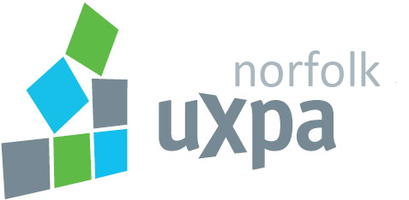Click HERE for Holiday Greetings !
This was just too cute not to share!
Thursday, December 08, 2005
Happy Holidays!
Posted by
Missy Schmidt
at
8:14 AM
1 comments
![]()
Labels: holiday
Saturday, November 19, 2005
Visitor's Map and Photo Slide Show
 I just found this great FREE online map to add to my blog. Please be sure to add yourself when you visit and give me a "shout out". The picture is just a snap shot; click on the link below for the actual map. See you on the map!
I just found this great FREE online map to add to my blog. Please be sure to add yourself when you visit and give me a "shout out". The picture is just a snap shot; click on the link below for the actual map. See you on the map!
http://www.frappr.com/missyblankenshiphomepagevisitors
Posted by
Missy Schmidt
at
2:34 PM
0
comments
![]()
Labels: Frappr
Monday, November 14, 2005
Business Development Certification with Peter Brinckerhoff
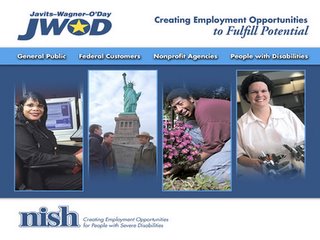 November 17-18, 2005
November 17-18, 2005
I will be at NISH National Headquarters in Vienna VA for a very important class en route to my certification.
BUSINESS DEVELOPMENT 1: THE PLANNING PROCESS
Purpose:
In today’s changing business environment, sound business planning is essential as CRPs seek ways to expand their current business activities and diversify into new areas and markets. CRPs list business development and developing additional contract opportunities as their greatest need. In this course, we will learn to successfully develop business strategies and conduct business planning from a nationally known trainer who has helped hundreds of notfor-
profits with business development initiatives.
Audience:
This course is designed for executives and senior and middle management staff responsible for planning, program development and decision making as they relate to business development in the CRP.
Take Away Value:
1) Learn how to make decisions about new business ventures.
2) Learn how to develop a feasibility study.
3) Learn how to write a business plan.
4) Learn how to finance a new business endeavor.
5) Develop an understanding of the rules surrounding Unrelated Business Income.
6) Gain an understanding of the corporate structuring options available to CRPs.
Instructor:
Peter Brinckerhoff is an experienced instructor who has provided training for NISH for over ten years. He is a highly sought after consultant in the not-for-profit arena and has helped hundreds of nonprofits develop business plans and revamp their marketing efforts. Peter is an award-winning author of ten books for not-for-profit managers including Mission-Based Marketing and Social Entrepreneurship. You can learn more about Peter at his Web site www.missionbased.com .
Posted by
Missy Schmidt
at
12:51 AM
0
comments
![]()
Labels: business development, NISH, plan
National Council of Work Centers

 November 13-16, 2005
November 13-16, 2005
I am attending the NISH East Region National Council of Work Centers (NCWC) Training Conference. This year’s conference will cover four tracks:
(1) NISH Policies & Procedures,
(2) Quality
(3) Workplace Development, and
(4) Products with a focus on opportunities for the NPA (Non Profit Agency).
The East Region consists of the following 13 states: VA, WV, MD, DE, PA, NJ, NY, MA, RI, CT, VT, NH, ME. The conference will be at the Brooklyn Bridge Marriott located at 333 Adams Street, Brooklyn NY.
Posted by
Missy Schmidt
at
12:26 AM
0
comments
![]()
Labels: business development, NISH
Monday, November 07, 2005
Our Cancun Trip October 2005, oops...make that Las Vegas thanks to Hurricane Wilma
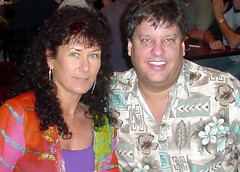
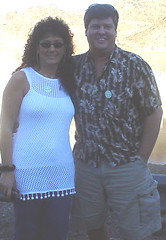


Grand Canyon-West Rim, Visit during trip to Las Vegas



We enjoyed We Will Rock You-A Musical Based on the Music of Queen at the Paris Theater in Las Vegas

And Elton John's last performance of his Red Piano Tour at Caesar's Palace in Las Vegas
Posted by
Missy Schmidt
at
10:33 PM
0
comments
![]()
Sunday, November 06, 2005
Friendship Volunteers at WVPT Great TV Auction
 The Friendship Volunteers on Phone Bank, Auctioneering and Bid Confirmation for the Fall 2005 Great TV Auction: Missy Stover (our Director of Development), me, Patricia Craft (Human Resources Manager) and Colleen Mullen (Job Coach), all posing with Cubby, the WVPT mascot.
The Friendship Volunteers on Phone Bank, Auctioneering and Bid Confirmation for the Fall 2005 Great TV Auction: Missy Stover (our Director of Development), me, Patricia Craft (Human Resources Manager) and Colleen Mullen (Job Coach), all posing with Cubby, the WVPT mascot.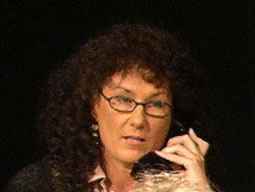


Posted by
Missy Schmidt
at
1:08 AM
0
comments
![]()
Labels: friendship, PBS
Wednesday, October 19, 2005
Sales Professional-to-Business Partner Opportunity
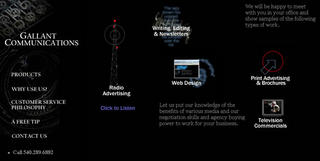
Sales Professional-to-Business Partner Opportunity
Gallant Communications
Harrisonburg, VA
Yearning for the opportunity to break out of the “same old same old” sales rut and use your Talents for the greater good, namely YOURS? To build a base of customers that could bring you the business partnership you’ve always dreamed of?
Full service advertising agency seeks an aggressive Sales Professional to acquire new business for explosive company growth. No need to have knowledge of advertising; we want sales experience and skills.
Successful candidate will become an equal partner in the firm in approximately 1 year AND majority owner of the firm in 8-10 years. To start, position is a generous commissions-only structure. First year income projected at not less than $40,000.
Only serious Sales Professionals need apply. Contact Jim Gallant at 540.289.6882 or info@gallantcommunications.com .
Posted by
Missy Schmidt
at
2:03 PM
0
comments
![]()
Labels: business development, communications, sales
Sunday, October 16, 2005
Friday, October 07, 2005
Saturday, October 01, 2005
Missy Joined Friendship Industries in 2001
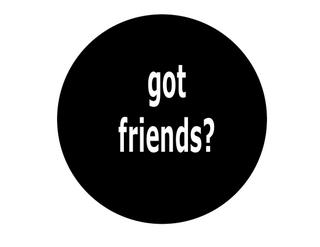 | It is with great regret that I left Friendship in June 2007 due to my family leaving the Shenandoah Valley of Virginia area for greater opportunities . I hope to continue my career with an equally rewarding organization in the Hampton Roads area. |
I joined Friendship Industries, Inc. in 2001 in the newly-created position of Sales and Marketing Director, ironically enough the week after 9/11 and a major US economic down-turn. As Friendship kicked off its next phase of growth and despite recent events, management decided that I filled the requirements: an energetic, extremely focused individual with attention to customer relationships, a strategic thinker, an effective leader and skilled communicator.
The time had come in Friendship's history to develop, implement and oversee a Comprehensive Sales and Marketing Plan to assure continued growth. I acted as customer liaison and managed the internal Customer Service personnel and was responsible for seeking out New Business Opportunities for the next generation of Friendship employees.
In business development mode, I launched Friendship's quest for Federal Government Contracts by working with NISH, attending conferences, making contacts and working through NISH's Business Development Training Program.
Read more about Government Contracting at www.jwod.gov (now www.AbilityOne.gov). Friendship achieved their first government contract ever under my direction, an Escape and Evasion (E&E) Kit for the US Air Force. I worked through existing partnerships and developed new commercial partnerships while in research and development with the USAF First Aid Kit Program Manager. Appropriations for this contract through FY07 will be approximately $3.6 million (for a total of $9 million for the initial supply to all airborne men and women) . Furthermore, the contract is a set-aside, added to the JWOD Procurement List (PL) , making Friendship Industries the sole source for the E&E Kit for the life of the USAF need. This product will never be put out for competitive bid.


NOTE: the JWOD Program launched a re-branding initiative in 2007, now referred to as AbilityOne.

Posted by
Missy Schmidt
at
6:40 PM
0
comments
![]()
Labels: AbilityOne, business development, defense, friendship, Hampton Roads
References and Recommendations

Login and see more Professional Recommendations on LinkedIn
Jack Greenhalgh, President of New Era Energy, Inc.
Co-Chair, Defense and Homeland Security Consortium, Hampton Roads
http://www.pentagonsouth.org/
“Missy single handedly created an extremely professional and effective website. The DHSC had the intention to create such a website for over two years but it took Missy’s imagination, website design capability and an amazingly short time to put it up. She immediately picked up on other needs, such a schedule of professional meetings in Hampton Roads, status reports on the progress on goals, schedules and minutes for DHSC meetings, educational opportunities in the area and contact information. She has made the website an extremely effective tool benefiting almost every goal activity of the DHSC.
Beyond that, she has helped organize the monthly meetings, recruit new volunteers and participate directly on other goals being worked by the DHSC.
I recommend Missy Blankenship very highly. She has quickly become a key factor in the success the DHSC is achieving. I particularly recommend her for her creativity, common sense, ability to work with others, initiative, commitment to quality and technical capability in marketing and public relations.”
Richard Lally, CEO of Oceana Sensor
Chairman of Hampton Roads Technology Council (HRTC)
http://www.oceanasensor.com/ http://www.hrtc.org/
“As an active volunteer, Missy has supported all the marketing, communications and PR for HRTC Defense and Homeland Security Consortium. She has demonstrated exceptional capability in this capacity and I have found Missy to be dependable, professional and quite energetic. I recommend her without reservation for any job that can leverage her skills.”
Tidewater Community College, Academy of Nonprofit Excellence
Student Survey Responses
“Great Program!!!”
“Would love a Part 2!”
“Missy's feedback on our marketing materials was wonderful, and I can't wait to get back and start making positive changes!”
“Great ideas for free or low cost are always welcome.”
“Super class!”
“The resources and information should prove to be invaluable.”
“Keep up the amazing work.”
John Maher, Director of Corporate Development
Chenega Advanced Solutions & Engineering, LLC
http://www.case-llc.com/
“You were making a HUGE impact in this organization. You were one of the cornerstones for:
team building; tenacity to do GREAT work including value propositions and systemic recruitment; speedy innovation with the draft marketing plan, new web design, and marketing materials; Strategic thinking! - You Knew where we needed to go!”
Patricia Craft, Human Resources Manager at Friendship Industries, Inc.(formerly served as my direct report as Customer Service Rep)
http://www.friendship-industries.com/
Harrisonburg VA
"As her colleague for nearly 5 years, I've seen Missy walk the walk and talk the talk. She's the consummate professional who recognizes the critical need for creating and executing short-, mid- and long-range plans. Creative, enthusiastic and with the vital ability to instill buy-in at all levels of an organization, this sales and marketing visionary isn't just a cloud walker...she rolls up her sleeves and gets the job done, too. You can't find anyone better than Missy Blankenship!"
Laura Wine, Customer Service Rep/ Mail Quality Control Specialist at Friendship Industries, Inc.(my direct report)
Harrisonburg VA
“I learned so much working for and with Missy Blankenship. She gives 110% to her job. She is the consummate professional in every sense of the word. A few words come to mind when I reflect on my time with Missy, "Thorough, Intelligent, "Can-do", Creative, Cool-headed and Quick-witted, oh so good at everything she does." I have never seen anyone with the professional network of Missy Blankenship! She always knows a way to get something done. Over, around, through...nothing can stop Missy. If you are considering Missy Blankenship for your next project - GRAB HER FAST...she is one of a kind!”
Buzz Van Santvoord, VP Fulfillment
Plow and Hearth www.PlowHearth.com
Madison VA
"Missy is a highly organized, proactive sales person. I worked with her on several projects and was never disappointed with the results. Missy thinks out of the box and has the unusual ability to anticipate roadblocks and design creative solutions to get by them. I was disappointed when she moved away, and I lost her as my account representative."
JOSEPH MEYER (Joe), Prime Vendor Program Mgr, Medical Logistics Sys Analyst
Air Force Medical Operations Agency, Office of the Surgeon General
Fort Detrick MD
Shelly Good-Cook, Senior Director-Membership Marketing & Chapter Relations at CTAM-Cable & Telecommunications Assoc. for Mktg.
Alexandria VA
“Missy walked into my office on a cold call and she was so personable that I decided to listen to her sales pitch. I ended up switching to her company based on that meeting and have been with them ever since. Not only is Missy able to accommodate every special need and rush request, she has a knack for making me feel like her most important customer.”
Rick Arnold, Military Sales Manager at Streamlight®, Inc.
Eagleville PA
“Missy is the consummate multi-tasker! If you want something taken from idea to completion, Missy is the person for the job. Her detail oriented Management and Leadership style is perfectly suited for any Company.”
Joyce Blevins, Buyer/Planner at American Safety Razor
Verona VA
“Missy was able to help me and my company with several different projects in a timely and professional manner. Her positive and energetic attitude is so refreshing and puts you at complete ease.”
Eddie Owens, VP-Manufacturing at American Press LLC
Gordonsville VA
Gary Juskowiak, Director-East Region, Richmond Office at NISH-Creating Employment Opportunities for People with Severe Disabilities
Richmond VA
Steve Lee, Partner at Newline International, LLC- Importers
US Office-Culpeper VA
Karen Tefelski , Executive Director of vaACCSES-Virginia Association of Community Rehabilitation Programs
Springfield VA
Pamela Pitzer, Six Sigma Black Belt (former Customer Service Manager) at Quebecor World Fairfield, Inc.Fairfield PA
Denise Armstrong, Manager Product Services at Alcoa Consumer ProductsRichmond VA
OTHER RECOMMENDATIONS
“I had the distinct pleasure of working with Missy for a brief time while she was at Friendship Industries. She is a detail oriented, outgoing person. I quickly developed a very close working relationship with her and valued her input on my projects.”
Jarrett Leeb, Vice-President of Jarrett Industries, Inc.
Packaging Design, Development and Production
Owings Mills MD
“I met Missy through a group that came to be called "A Few Good Vendors", consisting of a few of us marketing folks who all do significant business with nonprofit trade and individual membership associations. Many of us, like Missy, have worked in a "nonprofit" setting as well...and so understand the special nature and demands of "nonprofit" marketing. Missy is one of those special friends who "get it" -- who understand the "business of doing good" is still a business, and know what it takes to succeed. I look forward to hearing about her latest endeavors.”
Jerry Elprin, Director of Marketing Communications at DirectMail.comPrince Frederick MD
“Missy is very knowledgeable about her products and also a great communicator. She is a great salesperson and always pleasant to work with.”
Sarah Walpole Gray, Marketing Manager at NISH National Office
NISH-Creating Employment Opportunities for People with Severe Disabilities
Vienna VA
“DEDICATION, COMMITMENT, ENERGY . . . . all words I can use confidently in recommending Missy for any position. Missy was instrumental in helping me get the "A Few Good Vendors" group going in the Washington, DC area. She drove hours to be there and was a great resource to everyone. Missy, the association community in DC will greatly miss you. Wish you lots of success in the future!”
Stacey Riska, Owner of DataMax Solutions Data & Distribution Fulfillment Center
Gaithersburg MD
and Maui Wowi www.mauiwowi.com/about/spotlight/riska_wisdom.htm
"I met Missy through the American Marketing Association. She was coordinating a program on negotiation skills and asked me to speak on the topic. I was so impressed with her ability and style that I hired her to work on our direct mail marketing program. She took on the project, and executed it with precision - and results. That was ten years ago and I've recommended her to dozens of people since then. She is one of the most knowledgeable marketing experts I've ever met."Steve Kraner of Sandler Sales Institute
Herndon VA
Posted by
Missy Schmidt
at
4:06 PM
0
comments
![]()
Objectives
 Business Development / Marketing Communications
Business Development / Marketing Communications
25+ years of business development experience managing relationships in sales, marketing, communications. Expertise and talents best accommodate long-term needs, promoting and building open-ended, business-to-business and business-to-consumer, win-win relationships.
- Seeks permanent business development management position to put your organization in the right markets at the right time to build your bottom line.
- Seeks opportunities to drive your mission, focusing on strategies to fulfill your corporate goals, with special attention in federal, state and local government.
- Seeks position to utilize my strong initiative and commitment to world-class excellence, coupled with demonstrated experience in sales and marketing leadership, to develop mutually beneficial loyalty-driven business relationships.
Highlights of my qualifications include:
- Editor and public communication including public comment for first region-wide Comprehensive Economic Development Strategy (CEDS) for Hampton Roads, Virginia; year-long process used as example by U.S. Dept. of Commerce's Economic Development Administration
- $9 Million sole mandatory source USAF Contract, including product development, for the USAF’s Escape & Evasion Kit (E&E), a vital personal survival and medical kit not updated since the Vietnam War
- Small Business Status for a non-profit with the State of Virginia, including a catalog presence on eVA, Virginia’s e-Procurement Portal
- GSA MAS Award for SIN 426-4F for several Pandemic, Survival, Medical, Evacuation and Disaster Response Kits
- > Public Participation
- > Government Contracting
- > Strategic and Market Planning
- > Advertising/Events/Public Relations
- > Budgeting and Expense Control
- > Website and Print Collateral Design
- > Product Development
- > Brand Development/Brand Building
- > Contract/Price Negotiation
- > P&L Management/Purchasing
- > Staff Development and Motivation
- > Loss Prevention/Shrinkage Control
- > Merchandising and Inventory Control
- > Sales and Business Development
- > Key Customer Management/Retention
Melissa G. “Missy” Schmidt
Price is what you pay. Value is what you get. – Warren Buffett
Posted by
Missy Schmidt
at
3:45 PM
0
comments
![]()
Labels: business development, communications, marketing
Thursday, September 15, 2005
What Makes a Leader? By Colin Powell

Make people mad. "Trying to get everyone to like you is a sign of mediocrity. You'll avoid the tough decisions, you'll avoid confrotning the people who need to be confronted and you'll avoid offering differential rewards based on differential performance, because some people might get upset. Ironically, by procrastinating on the difficult choices, by trying not to get anyone mad and by treating everyone equally "nicely", regardless of their contributions, you'll simply ensure that the only people you'll wind up angering are the most creative and productive people in the organization."
Find and fix problems. "Many leaders build so many barriers to upward communication that the very idea of someone lower in the hierarchy looking up to the leader for help is ludicrous. Corporate culture often defines asking for help as weakness or failure, so people cover up their gaps, and the organization suffers accordingly."
Trust those in the field more than experts. "As companies get bigger, they often forget who 'brought them the the dance'. Policies that emanate from ivory towers often have an adverse impact on the people out in the field who are fighting the wars or bringing in the revenues."
Embrace change. "If it ain't broke, don't fix it" is a slogan of the complacent, the arrogant or the scared. It's an excuse for inaction. It's a mind-set that assumes (or hopes) that today's realities will continue tomorrow in a tidy, linear and predictable fashion. Pure fantasy."
Check your ego. "If people really followed organization charts, companies would collapse. In well-run organizations, titles are pretty meaningless. At best, they advertise some authority. But titles mean little in terms of real power, which is the capacity to influence and inspire. Have you ever noticed that people will personally commit to certain individuals who on paper possess little authority, but instead posssess pizzazz, drive, expertise and genuine caring for teammates and products?"
Encourage growth. "Effective leaders create a climate where people's worth is determined by their willingness to learn new skills and grab new responsibilities, thus perpetually reinventing their jobs. The most important question in performance evaluation is not 'How well did you perform your job since we last met?' but 'How much did you change it?'"
Promote positivity. "The ripple effect of a leader's enthusiasm and optimism is awesome. So is the impact of cynicism and pessimism. Leaders who whine and blame engender those same behaviors among their colleagues. I am not talking about stoically accepting organizational stupidity and performance with a 'What, me worry?' smile. I am talking about a gung-ho attitude that says 'We can change things here, we can achieve awesome goals, we can be the best.' Spare me the grim litany of the realist. Give me the unrealistic aspirations of the optimist any day."
From Selling Power, September 2005
Posted by
Missy Schmidt
at
12:01 PM
0
comments
![]()
Labels: leadership
Strategic Planning Templates E) Balanced Scorecard Approach
For a PDF of this document, click HERE.

Posted by
Missy Schmidt
at
10:50 AM
0
comments
![]()
Labels: strategic plan, template, vision
Strategic Planning Templates D) Outline
For a PDF of this document, click HERE.
What is Strategic Planning?
A Management Tool
A Way to Focus our Energy
Working towards same Vision
Who we are
What we do
Why we do it
A Way to Focus on the Future
Long Range Planning vs. Strategic Planning
Long Range
A plan for accomplishing a set of goals with the assumption that current knowledge of the future is reliable.
Strategic
Responsive to a dynamic, changing environment. May not always flow smoothly. A Creative Process. Will move forward and back many times before arriving at the final set of decisions.
STEP ONE: MISSION
Mission Analysis
Clarify why the organization exists, who we serve, what is required by those we serve and how those needs are met.
STEP TWO: VALUES
Value Analysis
Take a serious look at the real values that drive our ambitions and desires for the organization. How are these values communicated both internally and externally?
SAMPLE MISSION and VALUES STATEMENT:
Mission Statement
FriendshipIndustries, Inc.
develops and maintains employment and training opportunities for persons with disabilities in integrated work environments.
Values Statement
FriendshipIndustries, Inc.
believes in and values…
Accountability–
to our clients, to our customers, to our community and the global market, to ourselves and to our organization. Everyone takes responsibility for their position and their personal growth at Friendship and beyond. Everyone takes responsibility for the quality products and support services we provide.
Empowerment–
from within each individual and for the organization as a whole. We value self-sufficiency and educating ourselves as well as educating the community on contributions we make.
Innovation–
in our support services and allocation of resources, in our problem-solving capabilities, in our products and services and in future-thinking for our success.
Respect–
for everyone, especially recognizing and understanding individual abilities and challenges.
Shared Corporate Culture–
in all we do, we work cooperatively as a team to achieve excellence for our organizational purpose.
STEP THREE: VISION
Vision Analysis
In a perfect world, what does the organization look like five years from today? How would we best serve our stakeholders and customers?
What…..Not How!
STEP FOUR:
Key Customer Analysis
Major Customers or Customer Groups who are Direct Recipients of the organization’s Products and Services, and whose requirements must be satisfied to successfully accomplish The Mission.
Key Stakeholder Analysis
MajorIndividuals or Entities which have a significant, specific interest in the performance of the organization, and have the capacity to impact the direction of the organization. Stakeholders are usually NOT Direct Recipients of the Organization’s Products or Services.
STEP FIVE: SWOT Analysis or Environmental Scan
We step back and honestly take a look at ourselves, our internal environment and our organizational structure. What are our true Strengths and Weaknesses? How will these effect and influence Key Customers, Stakeholders and ultimately Key Result Areas.
Additionally, examine the external influences on our organization –Locally Regionally –Nationally –Globally. What are the Threats and Opportunities that present themselves and how do we address these as they relate to Key Customers, Stakeholders and Key Result Areas?
Helpful Hint:
When performing SWOT (Strength, Weakness, Opportunity, Threat) or Environmental Scan it helps to look at:
General, Economic, Political and Technological aspects of our environment.
STEP SIX: Key Result Areas (KRAs)
A Major Category of Key Customers/Stakeholders Requirements
These categories must prove to be CRITICAL for us to address to be successful in our Mission. When reviewing KRA’s, review how they align with Mission, Vision and Values. How do our SWOT results influence the KRA’s?
After analyzing the Key Result Areas and finding clarity on each, move on to choose:
STEP SEVEN: CRITICAL STRATEGIC ISSUES
What are the CRITICAL few issues that ABSOLUTELYMUST HAPPEN to move us forward to our Vision?
STEP EIGHT: Strategic Initiatives
The initiatives that will move us from our “Current State” to our “Future State”
STEP NINE: Goals and Objectives
Measurable activities to achieve the Strategic Initiatives that address our Critical Strategic Issues.
What is Strategic Management?
Attention paid to the “Big Picture”.
Willingness to adapt.
Formulation of Future Vision.
Development of a competitive strategy.
Creation of an organizational structure that will deploy resources as needed.
Special Thanks to Tom Hook, Friendship VP-Commercial Operations and Strategic Facilitator Extraordinaire
Posted by
Missy Schmidt
at
10:40 AM
0
comments
![]()
Labels: strategic plan, success, template, value, vision
Strategic Planning Templates C) Flow Chart
For a PDF of this document, click HERE.
missy_blankenship@hotmail.com
Posted by
Missy Schmidt
at
10:20 AM
0
comments
![]()
Labels: strategic plan, template
Strategic Planning Templates B) The Survey
Name _________________
Position _______________
Date ________
1. What do you see as the Mission of our organization?
2. Who are the important customers that we serve today?
3. What are our key products and services?
4. On a scale from 1 to 7, with 7 being the best we could be, how well do you think we are accomplishing our mission? _______
Can you elaborate?
5. What do you think our organization should (not will) look like in five years?
6. How is that different from our current state?
7. What resources do you think we need to make this future state happen?
8. What do you see as the major obstacles to successful Strategic Planning?
9. What present programs or product groups should we abandon?
10. What new and different programs, markets and technologies should we examine?
Other comments?
Remember…..
Focus on the End Result and not the Means to get there.
Posted by
Missy Schmidt
at
10:16 AM
0
comments
![]()
Labels: strategic plan, template, vision
Strategic Planning Templates A) The Contract
For a PDF of this document, click HERE.
Strategic Plan Contract
Team Member Expectations for a Successful Plan
1. For all to work better as a team.
2. Produce a flexible document that will guide our everyday decisions.
3. Create a plan that reflects our true mission, values and vision.
4. Treat each member of the team with attention and respect.
5. Honor all thoughts and ideas as contributions to the process.
6. Be prompt for all meetings and complete all assignments.
7. Make every effort to participate fully in each discussion.
8. Treat the planning process with the seriousness it deserves.
9. Understand that the President might make a decision that is not consistent with my own belief and accept that decision.
Expectations of the President for a Successful Plan
1. Ensure that he and the management team treat the planning process with the importance that it deserves. This includes being present at all meetings possible and supporting the process in both word and action.
2. Ensure that adequate resources are applied to the plan to give it a real chance for success.
3. Ensure that the planning assignments are accomplished. Be available to encourage team members to participate fully in the process and assignments.
4. Make a commitment, along with the management team, to use the final plan in the organization’s decision-making process.
Expectations of the Facilitator for a Successful Plan
1. Be a resource for all facets of the strategic planning process.
2. Ensure that everyone on the team contributes.
3. Is effective and efficient in the use of the team’s time.
4. Is helpful in telling any team member when words or actions are helpful or harmful and by providing assistance on how to interact with the team during the planning.
5. Ensures that the team stays focused on the task at hand.
6. Remains unbiased and without hidden agendas or desired outcomes.
7. Accepts constructive criticism and/or questions about planning process.
I agree to the content of this contract and pledge my support and participation.
DATE__________________
_______________________
John Doe, President
_______________________
Jane Smith, Facilitator
_______________________
Team Member
Posted by
Missy Schmidt
at
10:02 AM
0
comments
![]()
Labels: strategic plan, success, template
Saturday, September 10, 2005
RFP Templates
For a PDF of these documents, click HERE.
Posted by
Missy Schmidt
at
5:16 PM
0
comments
![]()
Labels: PR, public relations, template
Marketing Plan Templates
For PDFs of the following documents, click HERE.
Template 1-Process
Template 2-Goals
Template 3-Objectives
Template Budget-to-Actual
Posted by
Missy Schmidt
at
5:15 PM
0
comments
![]()
Brand Preference Stats from American Marketing Association
Brand Preference
Sony takes 1st prize for the sixth year in a row as the favorite brand among US adults, according to an onlone study of more than 2,300 adults conducted by Rochester NY-based Harris Interactive, Inc. in July 2005. Next in line is Dell, then Kraft. Coca-Cola drops to 4th place this year from 2nd last year. Other brands that received a large number of mentions -- but not enough to join the Top 10 list -- included Apple, Pepsi-Cola, General Mills, Kellogg's, Maytag, Whirlpool, Kenmore, Nike and Chevrolet. 1. Sony
1. Sony
2. Dell
3. Kraft
4. Coca-Cola
5. Ford
6. Toyota
7. Honda
7. General Electric (tie)
8. General Motors
9. Microsoft (new to the Top 10 this year)
9. Hewlett-Packard (tie) (new to the Top 10 this year)
10. Proctor & Gamble
Posted by
Missy Schmidt
at
5:11 PM
0
comments
![]()
Word of Mouth Marketing Association

http://www.womma.org/womnibus.htm
Awesome! Check it out! Here's a brief overview of WOMM...
Word of Mouth 101
An Introduction to Word of Mouth Marketing
Definitions
Word of mouth:
The act of consumers providing information to other consumers.
Word of mouth marketing:
Giving people a reason to talk about your products and services, and making it easier for that conversation to take place. It is the art and science of building active, mutually beneficial consumer-to-consumer and consumer-to-marketer communications .
What is Word of Mouth Marketing?
Word of mouth is a pre-existing phenomenon that marketers are only now learning how to harness, amplify, and improve. Word of mouth marketing isn't about creating word of mouth -- it's learning how to make it work within a marketing objective.
Word of mouth can be encouraged and facilitated. Companies can work hard to make people happier, they can listen to consumers, they can make it easier for them to tell their friends, and they can make certain that influential individuals know about the good qualities of a product or service.
Word of mouth marketing empowers people to share their experiences. It's harnessing the voice of the customer for the good of the brand. And, it's acknowledging that the unsatisfied customer is equally powerful.
Word of mouth can't be faked or invented. Attempting to fake word of mouth is unethical and creates a backlash, damages the brand, and tarnishes the corporate reputation. Legitimate word of mouth marketing acknowledges consumers’ intelligence -- it never attempts to fool them. Ethical marketers reject all tactics related to manipulation, deception, infiltration, or dishonesty.
All word of mouth marketing techniques are based on the concepts of customer satisfaction, two-way dialog, and transparent communications.
The basic elements are:
Educating people about your products and services
Identifying people most likely to share their opinions
Providing tools that make it easier to share information
Studying opinions - how, where, and when opinions are being shared
Listening and responding to supporters, detractors, and neutrals
Types of Word of Mouth Marketing
Word of mouth marketing techniques are geared toward encouraging and helping people to talk to each other about products and services.
Common types of word of mouth marketing:
Buzz Marketing: Using high-profile entertainment or news to get people to talk about your brand.
Viral Marketing: Creating entertaining or informative messages that are designed to be passed along in an exponential fashion, often electronically or by email.
Community Marketing: Forming or supporting niche communities that are likely to share interests about the brand (such as user groups, fan clubs, and discussion forums); providing tools, content, and information to support those communities.
Grassroots Marketing: Organizing and motivating volunteers to engage in personal or local outreach.
Evangelist Marketing: Cultivating evangelists, advocates, or volunteers who are encouraged to take a leadership role in actively spreading the word on your behalf.
Product Seeding: Placing the right product into the right hands at the right time, providing information or samples to influential individuals.
Influencer Marketing: Identifying key communities and opinion leaders who are likely to talk about products and have the ability to influence the opinions of others.
Cause Marketing: Supporting social causes to earn respect and support from people who feel strongly about the cause.
Conversation Creation: Interesting or fun advertising, emails, catch phrases, entertainment, or promotions designed to start word of mouth activity.
Brand Blogging: Creating blogs and participating in the blogosphere, in the spirit of open, transparent communications; sharing information of value that the blog community may talk about.
Referral Programs: Creating tools that enable satisfied customers to refer their friends.
Posted by
Missy Schmidt
at
5:10 PM
1 comments
![]()
Labels: blog, buzz, evangelist, grassroots, marketing, referral, viral, word of mouth
For Better Emarketing Results, Write Better Email
 If you want better response, concentrate on the three most important things about writing better email copy:
If you want better response, concentrate on the three most important things about writing better email copy:
First, write effective subject lines.
Second, never forget WIIFM (what's in it for me?)—the value proposition.
Think from the prospect or customers’ perspective.
Third, remember that less is more.
Convey your sales message quickly and succinctly.
For Better Emarketing Results, Write Better Email
On the subject of Subject Lines:
First, with email you need to capture readers’ attention even faster and with fewer words. That’s because business professionals average 75 to 100 emails per day—and they’re looking for reasons to delete emails, not to open and read them.
Second, you have to realize that hard-copy letters look more “official” than messages on a screen and, therefore, they can still get more attention and seem more authoritative if you’re not careful with your email.
Third, you do have to make the most of the subject line, which is challenging.
Also: maintain a professional tone, just as you do on paper; don't treat email as instant messaging, always proofread, be brief and get to the point quickly. And don’t forget to include a call to action, just as in direct mail. What do you want the customer to do next? Your email must tell them.
A strong subject line is your best opportunity to capture the reader’s interest; be specific and use words that act as directional tag lines—words like action, update, request, and attached. These make your messages much more likely to be opened and responded to.
Beware of words that discourage opening your email.
Examples: high priority, FREE and FYI.
It can be easier to write an effective subject line after you write the body of your email. By the time you’re done writing, you know better what’s best to emphasize. Just don’t forget to add the subject line.
Your email should immediately emphasize your product’s problem-solving ability. Another mistake is TMI, or Too Much Information.
Don't think that a single email will grab a prospect’s attention enough to sell something. What you need are multiple “touches,” as personal as possible, that will make prospects think you’re professionally persistent but not pesky. These other touches can be handled through email, direct mail, a phone call, a white paper, a small gift in the mail, postcards, a newsletter, a relevant article, and so on.
This is a short synopsis of an article by Judy Kidd Griffin from AMA's Marketing Fast Facts (yes, AMA membership has it's perks!).
Read the full story and more about Judy—principal of the Write Angles coaching firm in Research Triangle Park, North Carolina and associate of Jim Kidd Sales Coach at http://www.writeangles.org/aboutjudy.html .
Posted by
Missy Schmidt
at
5:05 PM
0
comments
![]()
The Ad-Averse: Finicky and Opinionated; YES, I can relate!
 October 3, 2005
October 3, 2005
By ALEX MINDLIN
The online marketing research firm Intelliseek released data last week suggesting that so-called ad-skippers - those who avoid ads on TV or the Internet, either by installing pop-up blockers, by recording shows and skipping the spots or by changing channels when commercials come on - behave differently in other ways as well.
The study of 660 consumers found that ad-skippers were generally more interested than their ad-watching peers in online product research and more likely to participate in online discussions of products, like those on blogs or product review sites. Those who skipped ads were 17 percent more likely to research computer hardware or software online, and they posted comments on Web sites 25 percent more often.
This creates problems for marketers, said Pete Blackshaw of Intelliseek. "The same consumers they're spending money researching are now taking control of the message," sometimes voicing opinions that are the opposite of what the marketers want to project.
The New York Times Company
Home
XML
Posted by
Missy Schmidt
at
4:50 PM
0
comments
![]()
Labels: advertising, marketing
Strong Branding Helps Friendship Achieve Strategic Goals
Sales and Marketing:
Stakeholder’s Report July 2004-June 2005
To Friendship Industries, the word “brand” carries many meanings.
Our brand is:
…our values and how those values are conveyed.
…what we stand for and what we don’t.
…our personality as an organization.
…how and with whom we do business.
…the care that goes into each product and service.
…the care shown to customers and clients.
…the look and feel of our facility.
…the behavior of our employees.
…all of our communications- in person, in policy, on the phone,online, in correspondence and in advertising.
To Friendship, Branding is NOT simply new slogans, taglines or logos or stating that we’re “different, better or bigger”. And in today’s marketplace, Friendship’s Brand MUST be carried through in everything we do, both internally and externally. In developing our new marketing strategy, we included Brand consistency throughout.
In developing our Brand, it was decided that the three components of Friendship should work together to develop a single plan under a similar “umbrella”:
Commercial/Sales (The “Fuel” of Friendship),
Rehab/Human Resources (The “Function” of Friendship) and
Development/Public Relations (The “Fire” of Friendship).
Despite our unique roles, responsibilities, audiences and purpose, we all have the same Mission, similar Goals and thus congruent Objectives for achieving them.
Our first step was the launch of our fresh and innovative website in May 2005. The main goals of Friendship's website are educational and informative as well as improving commercial sales.
Our objectives are:
(1) to educate the community of the contributions made to the community by Friendship and to improve and increase our public image,
(2) to educate current customers and prospects of our commercial capabilities, esp. equipment available and partnering opportunities,
(3) to increase awareness of our rehab training capabilities and
(4) to increase awareness of the needs of persons with disabilities to increase stewardship. http://www.Friendship-Industries.com
Stay tuned….
Missy Blankenship, Director of Sales and Marketing
800.777.9586
MelissaBlankenship@Friendship-Industries.com
Posted by
Missy Schmidt
at
12:15 PM
0
comments
![]()
Labels: brand, friendship, marketing, sales
Marketing for the Next Generation

Marketing will be the most important area of expertise for the next generation of business leaders, according to 29% of surveyed business executives.
Source: Institute of International Research (June 2005).
Bring the best of both worlds together – Sales and Marketing. Sales is the act of selling products or services, and it’s Marketing that gets you in the door. They work together.
Posted by
Missy Schmidt
at
12:06 PM
0
comments
![]()
Labels: generation, marketing, sales
Marketing Metrics
For a PDF of this document, click HERE. Just as important as creating a strong marketing plan is following through on the results.
Just as important as creating a strong marketing plan is following through on the results.
Why Measure? If a company doesn't identify and track important performance measures, it increases its risks.
Defining Metrics:
· Measurements are the raw outcome of a quantification process, such as a company's numbers, ratios, and percentages.
· Metrics are the standards for measurement, providing target values that a company must achieve to reach a certain level of success.
· Benchmarks are the best measurements to aspire to, the standard by which all others are measured. Companies that set benchmarks in their industries are the ones often lauded in "Top ten" and "Most Admired" lists and articles.
Determine the Metrics Needed to Measure Your Company’s Performance:
Compile a list of factors that are important in your industry. Criteria may include:
· Marketing: sales growth; market share; distribution methods; sales force size, effectiveness and training; advertising budget and effectiveness; inventory levels, delivery time; product quality; customer retention rates
· Production: plant capacity, locations and age; age of equipment; ability to expand capacity; skill and turnover of labor force; union relations; quality control; supplier retention; raw material sources
· Administrative: employee turnover, age of facilities
· Management: experience, depth and turnover of top, middle and supervisory managers; effectiveness of communication systems; access to information; cohesiveness of top management ranks; compensation plans; decision-making speed; strategic planning ability
· Technology/Research and Development: age of R&D facilities; age of production technology; production patterns; basic innovation; engineering abilities; experience of R&D team; R&D budget; R&D project timelines
Three Important Metrics Gauges:market share, lifetime value and brand equity.
Four key performance indicators enable you to address market share:
· Customer growth rate
· Share of preference
· Share of voice
· Share of distribution.
The following performance indicators will help you drive these penetration-related metrics:
· Frequency and recency of purchase
· Share of wallet
· Purchase value growth rate
· Customer tenure
· Customer loyalty and advocacy
DEFINITIONS OF MEASUREMENTS and METRICS
Acquisition Cost
The cost of a single response to a promotion or total cost divided by total number of responses.
Brand Awareness
If you ask 1,000 manufacturing managers whether they've heard of your brand, the result will indicate your penetration into the minds of prospects.
Brand Preference
What percent of those who are aware of your brand, prefer your brand over your competitors?
Brand Image
What percent of those who are aware of your brand feel positive (preferred, obviously) or negative about your company and your products?
Brand Loyalty
A measure of the degree to which a buyer recognizes, prefers and insists upon a particular brand; brand loyalty results from continued satisfaction with a product considered important and gives rise to repeat purchases of products with little thought but with high-involvement.
Cost of Servicing Customer
A measure of all of the actual costs, administrative, etc., associated with servicing a specific customer.
Customer-Acquisition Metrics: Key acquisition metrics include the following:
· Awareness levels
· Purchase-decision drivers
· Rate of customer acquisition
· Market share
· ROI of marketing programs
· Cost of customer acquisition
Customer Defection
The rate at which customers are lost and the reason(s) why.
Customer-Retention Metrics: Improving customer retention remains one of the most effective ways to drive profits to the bottom line. Marketers want customers not only to continue using products on an ongoing basis but also to buy other products and services. Current customers are also vitally important in spreading positive word-of-mouth, which attracts new customers. By turning loyal customers into advocates, marketers can significantly reduce customer acquisition costs and significantly increase the value of current customers. Some key customer retention metrics include:
· Retention rate
· Abandonment rate
· RFM (recency, frequency, monetary value)
· LTV (lifetime value)
· Brand equity
· Net promoter score -The net promoter score measures the difference between customers who spread positive and negative word of mouth about your product.
Improved Customer Relationships
Happier customers can represent a return on investment. This can be gauged through repeat order patterns, by a change in the number of complaints, compliments, or through customer surveys comparing pre- and post-project satisfaction.
Lifetime Value (LTV)
Total anticipated revenue collected from a given customer. Lifetime values can be measured for: Donors, Customers, Clients. Current Sales (or Donation) x estimated customer life
Media Mentions
Product mentions or appearances per medium per month and whether those mentions were positive or negative. Number of press releases, pieces of mail, number of new customers, number of web hits or visitors, awareness changes (or the extent to which people are more aware of your product), impressions (number of articles in the press multiplied by the potential readership of each publication), content analysis, recall measures, and on and on.
Referrals by Customer/per Customer
A measure of the number of customers willing to refer new customers and number of referrals by each customer.
Return on Investment (ROI)
ROI is a computation that tells you how much you received compared to what you put into a project. You can express ROI in terms of a dollar amount ($) or as a ratio (%).
The dollar amount formula ($) tells how much you increased profit in total dollars as a result of the project: (Cost savings and earnings as a result of the project) minus (Dollars invested)
The ratio formula (%) tells how much you got back, in dollars, for each dollar you invested in a project: (Cost savings and earnings as a result of the project) divided by (Dollars Invested)
Sales
For a Commercial Measure: Increase in sales volume.
For a Rehab Measure: Social impact of person working in CRP versus not working (tax payer savings, less gov’t reliance, etc.) or the “Doing Well while Doing Good” Factor
Sales Per Customer
Number of sales made by a given customer in a given time frame
Measuring promotion strategies as to which work and which do not:
The following can be used to measure success:
1. Asking. Everyone who makes an inquiry to your company should be asked how he/she found out about your organization. The various order and inquiry forms should collect this data that are periodically analyzed and then used in marketing planning.
2. Coding. Code every piece of marketing material, especially direct mail, to track success.
3. Surveys. Compare pre- and post-project satisfaction.
4. Internet. On your web site, a counter can be incorporated to keep track of the number of “hits” or visits to the site. A guest book can also be included on the web site to get more information and leads on potential customers. E-mail inquiries and on-line orders can also be tracked. Track messages received via alias emails to analyze web traffic and web-site click-thrus.
NOTE: To be effective, track components of marketing separately within the company’s accounting system: direct mail printing costs, postage costs (not invoices), ads (not job classifieds), seminars/training, etc.
RETURN ON INVESTMENT (ROI) TOOL
Measure the cost per piece, cost per new customer, and more.
Use this tool to test different sets of assumptions to see how your program results might vary with different response rates and different conversion rates.
Divide your customers into three: current users (your biggest asset), lapsed users (particularly important if you are losing market share) and potential customers (your source of growth).
To make a simple calculation for the ROI you need the following information:
(A) The total costs of the campaign
(B) The total number of direct mail pieces (newsletters)
(C) The response rate from the newsletters (what percent of the people who got your direct mail, for example, clicked through to your site?)
(D) The conversion rate (what percent of those who clicked through actually bought something
(E) The average amount of sales per person who bought something based on the direct mail.
The ROI = ((B*C*D*E)-A)/A
You can refine this figure by actually calculating the exact amount of sales from all the people who bought something that came from the direct mail campaign (use this number instead of (B*C*D*E).
Monday, September 05, 2005
Sales and Service: Can't We All Just Get Along?
I have to share this from Michelle Nichols...I could have written it myself! Those who sell tend to forget that they are only as good as their customer-service teams. That's a costly blunder, but one so easy to avoid I love being in sales. It's hard to beat the emotional high of finally closing a big deal. But signing any contract is like a wedding. Like any lasting relationship, the real work -- and profit -- comes during the course of the many years that follow the exchange of "I do's." In many companies, this job belongs to the customer-service department, which is responsible for the care and feeding of the customers, and whose job it is to respond to the occasional "whoops!"
Those who sell tend to forget that they are only as good as their customer-service teams. That's a costly blunder, but one so easy to avoid I love being in sales. It's hard to beat the emotional high of finally closing a big deal. But signing any contract is like a wedding. Like any lasting relationship, the real work -- and profit -- comes during the course of the many years that follow the exchange of "I do's." In many companies, this job belongs to the customer-service department, which is responsible for the care and feeding of the customers, and whose job it is to respond to the occasional "whoops!"
Customer-service teams are all too often unsung heroes -- and that lack of recognition is just plain crazy. If you increase sales by 10%, but simultaneously lose the same percentage of clients due to lousy customer service, all your latest selling efforts would be for naught. You might just as well have stayed home in bed!
Savvy business owners encourage their sales and customer-service departments to work together. This strategy keeps customers happy, maximizes revenues and profits, and also makes for a more pleasant work environment. These were some of the points that came to mind when I recently adressed a conference of sales people and customer-service reps.
Here are my suggestions on how the teams can work together to maximize results:
For salespeople:
• Respect. In many outfits, the way customer-service professionals are treated brings to mind the recently departed comic Rodney Dangerfield. Sadly, they "don't get no respect," and that is a huge mistake. Let the customer-service folks know how valuable they are to you personally. If you have an awesome customer-service team, one that can calm the savage heart of an infuriated customer when things go wrong, it is your best ally. Those folks will help you save that account, maintain your current sales, and prepare a foundation on which to build new ones.
• Extreme needs. Before you accept an order with unusually rigorous or demanding requirements, find out if the customer really needs it. Question if there is some flexibility in the specifications. In this age of e-mails and overnight-to-anywhere-in-the-world shipping, some customers want everything yesterday, in a custom color and size.
By distinguishing your customer's needs from his or her preferences, you will free the customer-service folks to focus on the orders that really are urgent.
• Promises, promises. When it comes to shipping, don't promise your company can get an order out today without checking if fulfilling that pledge is actually doable. Unless you are willing and able to stop what you're doing and process the order yourself, find out what is already on the books before you make promise that may prove difficult or impossible to keep. Promises, in other words, that will soon came home to roost in the laps of the customer-service team.
• Fa-la-la. Sing the praises of your customer-service people to your clients and do it loud enough so they can hear. Sell your customers on what great service they are going to get, and that it will be prompt, accurate and friendly. Let them know that the sales-support squad will be a pleasure in the event of questions or a reorder.
For customer-service people:
• Talk friendly. Since you are probably connecting with customers over the phone, a friendly and helpful tone of voice is essential. There's no use compounding customer's frustration with a a voice that suggests a grumpy or uncaring attitude. One customer-service pro tells me that she puts a mirror on her desk. That way, when the phone rings, regardless of what's going on in her life, she can look in the mirror and check that she is wearing a smile. It shows in her voice!
• It's Yes or it's No. There's no sense in telling the customer "yes" if it ain't gonna' happen. You'll end up with a disappointed customer -- maybe even an ex-customer. It's wiser, not to mention more honest, to say, "No, but," and then offer an alternative solution that can be achieved. Try something like, "No, we can't do that because of this reason, but we can provide this alternative solution for you."
• Watch your rep. Remember that repairing a bad reputation is like making a U-turn in an ocean liner -- it's possible, but never quick or easy. So do whatever it takes to maintain a good reputation. One of my favorite cartoons shows two police officers down at the station and one is on the phone. He tells the other that the cable company has called because they've just been robbed. To which his partner replies, "Tell them we'll show up to investigate between 1 and 5." Ouch. Bear in mind that cable companies are not alone in their industry-wide bad reputation.
No matter which team you're on, sales or customer service, it's important that both sides work together to serve the customer and win the right to ask for another order, preferably a larger one. When there's a problem, forget finger-pointing, which just puts everyone on the defense, delays a resolution, and makes all concerned lose sight of the big picture. Instead, make your motto, "Let's solve this challenge together." By thinking and working together, you can all accomplish -- and sell -- so much more. Happy selling!
By Michelle Nichols of Savvy Selling International.
Please visit Michelle's web site at http://www.savvyselling.com/www.savvyselling.com for additional sales articles and resources on selling.
Posted by
Missy Schmidt
at
2:55 PM
0
comments
![]()
Labels: customer service, sales
In Sales, How to Ask the Questions That Matter
 Effective Questioning = Know What to Ask and Know When/How to Ask
Effective Questioning = Know What to Ask and Know When/How to Ask
(1) Plan your questions beforehand.
Plan, Plan, Plan.
(2) Target your questions at the six vital lines of inquiry:
What is the current state of the customer's business?
What is the desired state of the customer's business?
What challenges prevent the customer from moving to the desired state?
Which business and personal motivators influence the final decision?
What are the resources, authority and budget that can be committed to move to the desired state?
and
What is the past has been tried (but failed) to move to the desired state?
(3) Don't have an inquisition.
Don't try to extract too much too fast. Pace yourself.
(4) Don't rehearse the questions.
Don't sound "canned".
(5) Listen to the customer - really listen.
Don't spend time watching the customer's mouth move, formulating what you plan to say next. Pause before speaking after the customer has spoken. Yes, pause.
(6) Ask abstract leading questions.
For example, "In a perfect world, what would your vendor do (or be) for you?"
(7) Ask open-ended questions.
These questions usually start with "how", "what" or "why". For example, "Yes, I'm here to tell you about the ABC. But what's going on with you? How did that big project turn out?"
(8) Echo the customer's culture.
Know where you are and who you are speaking with. For example: Southerners tend to be much more social in conversation while New Yorkers will avoid idle chit-chat.
Selling Power Magazine, September 2005
Posted by
Missy Schmidt
at
1:52 PM
0
comments
![]()
Labels: customer service, questions, sales
Push versus Pull in Sales and Marketing
Remember the story of Dr. Doolittle and the pushmi-pullu (Push Me-Pull You), the two-headed llama?
 The theories behind "push" and "pull" sales and marketing make me think of Dr. Doolittle's llama. That poor animal never knew whether it was coming or going, and it's survival was dependent upon learning when to PUSH and when to PULL.
The theories behind "push" and "pull" sales and marketing make me think of Dr. Doolittle's llama. That poor animal never knew whether it was coming or going, and it's survival was dependent upon learning when to PUSH and when to PULL.
Just like the pushmi-pullu, if you PUSH when you should be PULL-ing, you'll lose ground and/or your balance...and, ultimately, the sale!
One of the biggest mistakes made in marketing is to PUSH information about products and services in the hope this will result in attracting prospects. Unless your brand is already a household name (like Coca-Cola or Proctor and Gamble), PUSH-ing rarely attracts real numbers of new customers that you need.
An alternative to PUSH marketing is to PULL prospects in. If you want prospects to remember your brand when they have a need for your products or services, start by attracting their interest first. Generate interest by focusing on what your potential customers want and their problems that need to be solved. Use this "customer-centered" marketing strategy to PULL prospects in. Give ideas that can be really used . Repeat your focus again and again. Create the kind of interest that draws customers to you and your brand.
After you develop a relationship, then you can PUSH useful information out to your customers.
Are you PULL-ing prospects in or just PUSH-ing your information out? Review your marketing materials to see if you have it right. Take a look at your web site, brochures, newsletters, correspondence and proposals.
PULL Tactics: "Customer-Centered"
Use a blog...make it interesting enough to encourage people to subscribe.
In your marketing materials:
Begin with a clear identification of the niche market(s) you work with.
Lead with customer problems and concerns that you can solve.
Create a picture of your brand that your target market can identify with.
Provide useful ideas that your target market can use and that demonstrates your expertise. Offer something for free (even if it's just information) that is useful to your target market.
PUSH Tactics: "You-Centered"
Use a website that is simply an on-line brochure.
In your marketing materials:
Focus on you, your services and staff.
Focus on glowing testimonials and your client list.
Use business "speak", instead of language that anyone would understand.
While both tactics work, the challenge is knowing which to use and when.
The PUSH then PULL marketing sequence works when you want to get prospects to give you their contact information. You PUSH useful information out to select prospects on a regular basis. (Remember, most buyers won't make a purchase until they've had up to 9 contacts from you). When your prospects have a compelling need, they'll turn to you since they’ve had regular communication from you. At some point prospects will want more details about your services, credentials and testimonials. But this is often the last information they need.
Use PULL and then PUSH marketing strategies to get your sales really moving in the right direction.
Posted by
Missy Schmidt
at
12:39 PM
0
comments
![]()
How to Use Questions Effectively

When speaking with a ...
Long-winded, talkative Customer:
use more close-ended questions and try to preface the questions with limiting statements such as "Can you tell me briefly...?" or "In one or two sentences, how would you describe...?"
Short-winded, tight-lipped Customer:
pause between questions. Also, ask such open-ended questions as "What seems to be the reason...?" "I'd like to get your objective opinion on...?" or "What do you think led to this situation?"
Combative Customer:
remain calm and composed. Phrase each question so you focus on wanting to help the customer solve the problem. Do not interrupt this person. above all, retain your professionalism at all times.
Big-Shot Customer:
be willing to feed the self-important customer's ego, even if it means setting your own ego aside. Always be polite, and ask questions that rephrase what he/she just said and include compliments.
Selling Power Magazine, September 2005
Posted by
Missy Schmidt
at
12:03 PM
0
comments
![]()
Labels: customer service, questions, sales
Thursday, September 01, 2005
5 Customer Service Mistakes
 1. Don’t leave a good voicemail message. How many times have you listened to a message left for you and you wonder, “what did they want?” Say your name or phone number clearly, plan what you want to say BEFORE your call and sound completely organized in what you’re calling about if you do have to leave a message and don’t ramble. Leave a voicemail message for yourself sometime and then ask yourself, “would I call myself back after a message like that?”
1. Don’t leave a good voicemail message. How many times have you listened to a message left for you and you wonder, “what did they want?” Say your name or phone number clearly, plan what you want to say BEFORE your call and sound completely organized in what you’re calling about if you do have to leave a message and don’t ramble. Leave a voicemail message for yourself sometime and then ask yourself, “would I call myself back after a message like that?” 2. Don’t be on time. There’s really no excuse for this for being late to an appointment or meeting. Always plan on being 15 minutes ahead of time. By getting there early, you get your nerves under control, you can go over your plan of action, and you can observe the environment around you. If you are late for one appointment for unforeseen reasons, that may be excusable the first time as long as you call ahead and let them know. But if it happens the second time, your odds of getting invited back have just gone down tremendously because you’re seen as someone who cannot be depended upon.
2. Don’t be on time. There’s really no excuse for this for being late to an appointment or meeting. Always plan on being 15 minutes ahead of time. By getting there early, you get your nerves under control, you can go over your plan of action, and you can observe the environment around you. If you are late for one appointment for unforeseen reasons, that may be excusable the first time as long as you call ahead and let them know. But if it happens the second time, your odds of getting invited back have just gone down tremendously because you’re seen as someone who cannot be depended upon. 3. Don’t be prepared. Don’t just “wing it”. In a recent survey top-level-decision makers were asked, “what is the most important thing to you in business?” The overwhelming response: time. They said that money could be replaced. Their time couldn’t. That’s why you see so many executives want you to get to the bottom-line quickly and cut the small talk. They’re not being rude. They just have so many other demands on their time that you better know what you want, how you want to say it, and move on within fifteen minutes. You can take care of the details with the subordinates later. And a part of preparation is knowing what you want to say, what you expect them to say, how you will respond, and what is happening in the environment during the appointment (body language, what is and what is not being said, and how people are relating to each other).
3. Don’t be prepared. Don’t just “wing it”. In a recent survey top-level-decision makers were asked, “what is the most important thing to you in business?” The overwhelming response: time. They said that money could be replaced. Their time couldn’t. That’s why you see so many executives want you to get to the bottom-line quickly and cut the small talk. They’re not being rude. They just have so many other demands on their time that you better know what you want, how you want to say it, and move on within fifteen minutes. You can take care of the details with the subordinates later. And a part of preparation is knowing what you want to say, what you expect them to say, how you will respond, and what is happening in the environment during the appointment (body language, what is and what is not being said, and how people are relating to each other). 4. Don’t be knowledgeable and helpful. It is very important to properly express to the customer or prospect “what’s in it for them” if they purchase our products or services. Give them proof that we are THE company to deal with. Decision-makers are concerned about the bottom-line: what results will you get me and how soon?
4. Don’t be knowledgeable and helpful. It is very important to properly express to the customer or prospect “what’s in it for them” if they purchase our products or services. Give them proof that we are THE company to deal with. Decision-makers are concerned about the bottom-line: what results will you get me and how soon? 5. Don’t be respectful with prospects and customers. Give a handshake that does not feel like a “dead fish”. Make eye contact. Don’t clear your throat too much which is a sign that someone is not telling the truth. Turn your cell phone off. Don’t be evasive in your answers which they read as you’re trying to hide something or you have no knowledge of what you’re talking about. Don’t talk small talk with someone who wants to get to the bottom-line immediately. Listen. Remember people’s names you’re introduced to. A lot of little things that add up to the whole. If enough are missing, you will be ”missing” when the best vendors are invited back in for the next job.
5. Don’t be respectful with prospects and customers. Give a handshake that does not feel like a “dead fish”. Make eye contact. Don’t clear your throat too much which is a sign that someone is not telling the truth. Turn your cell phone off. Don’t be evasive in your answers which they read as you’re trying to hide something or you have no knowledge of what you’re talking about. Don’t talk small talk with someone who wants to get to the bottom-line immediately. Listen. Remember people’s names you’re introduced to. A lot of little things that add up to the whole. If enough are missing, you will be ”missing” when the best vendors are invited back in for the next job. Customer Service, like sports, is a “contact sport” that requires you to acquire the necessary skills, improve those skills, and execute those skills. If you do, you will become a true professional. If you don’t, you’ll just remain an order taker.
Customer Service, like sports, is a “contact sport” that requires you to acquire the necessary skills, improve those skills, and execute those skills. If you do, you will become a true professional. If you don’t, you’ll just remain an order taker.
Posted by
Missy Schmidt
at
2:03 AM
0
comments
![]()
Labels: customer service
Customer/Prospect Follow-up Tips
- Say Thank-You. Everyone likes to be appreciated.
- Keep your promises. Yours and your company's.
- Form reliable routines. Let customers know they can count on you.
- Offer ideas. You're worth more as a valuable resource than just a vendor.
- Communicate. Communicate! How else will you know if you're meeting needs and how you can improve?
- Respond quickly. Be accessible and return calls as soon as possible.
- Visit unexpectedly. Bring a treat, stop in for a friendly visit.
Posted by
Missy Schmidt
at
12:15 AM
1 comments
![]()
Labels: customer service


















